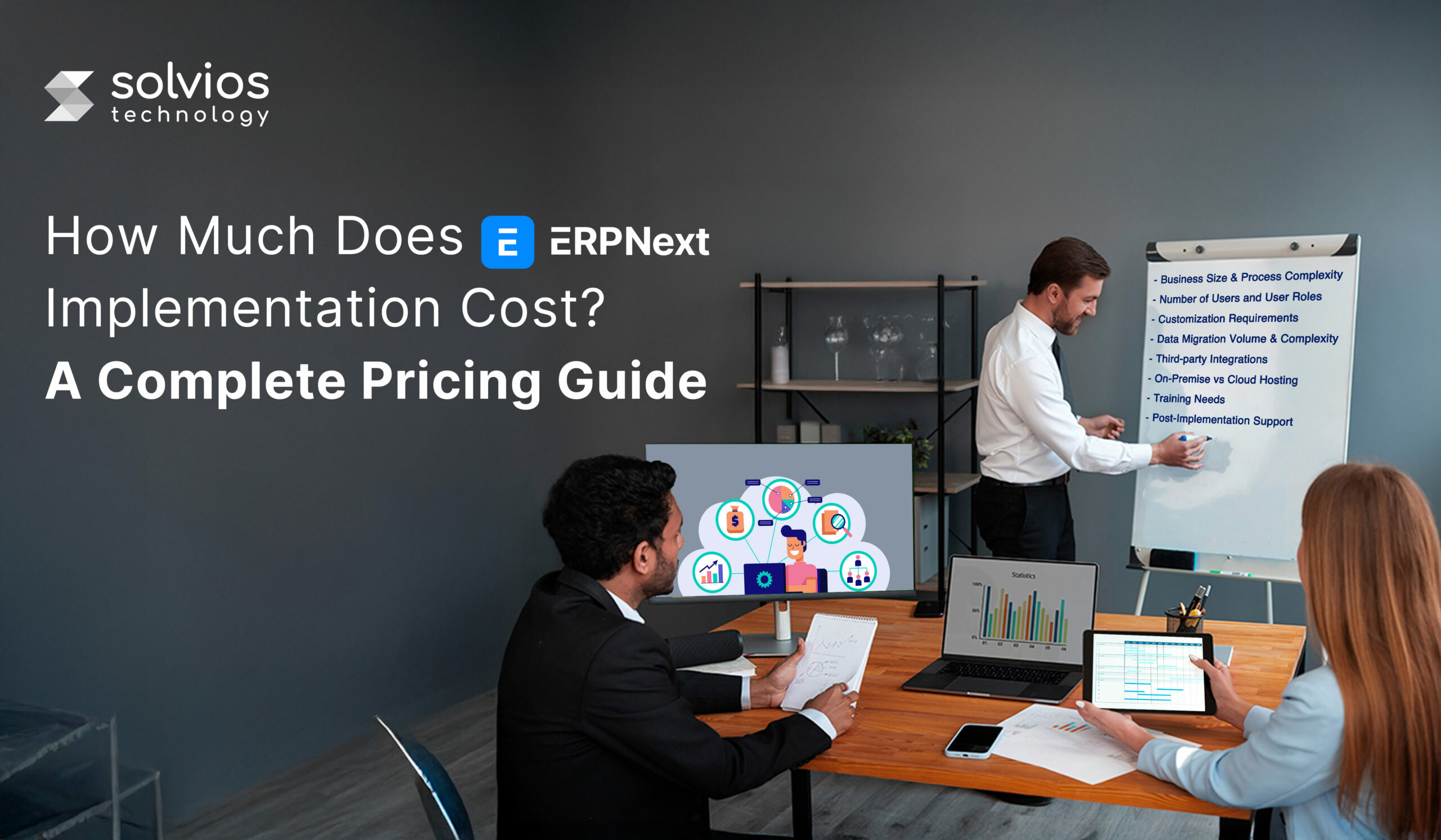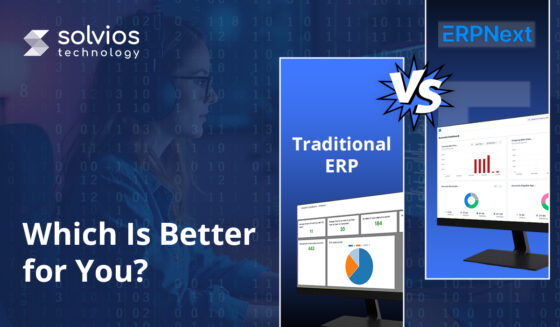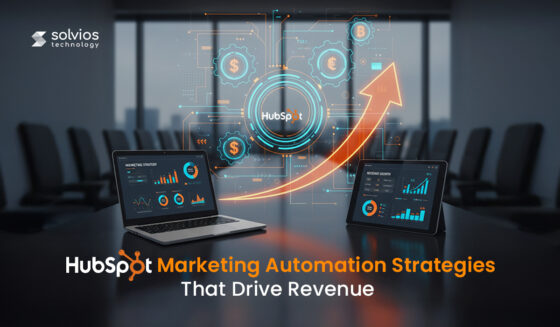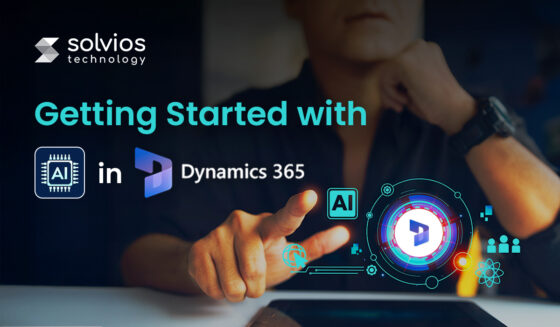
Introduction
ERP systems are the backbone of digital transformations.
These modern, user-friendly, and robust software programs are designed to help organizations embark on a transformative journey. An ERP allows businesses to improve efficiency, offer streamlined operations, and increase productivity.
However, not all ERPs are equal.
Platforms like ERPNext stand out because they are flexible, scalable, and open-source. It manages different aspects of a comprehensive list of features, ranging from
From small to medium and enterprise-sized businesses, open-source systems like ERPNext do the heavy lifting without companies paying high licensing fees.
But what are the costs associated with such a unique ERP system?
Let’s find out as we break down the different aspects of ERPNext implementation in the guide. Whether you’re an SMB, an enterprise, or a key decision-maker in your firm, this guide will give you a clear view of what to expect.
What is ERPNext?
ERPNext is a comprehensive, open-source ERP solution designed to align with the evolving needs of businesses. Once integrated into your system, it covers all the core business functions, including:
- Accounting
- CRM and Project Management
- Human Resources
- Manufacturing
- Inventory and Warehouse
- Sales and Purchase Management
Built on the Frappe framework, the ERPNext software is designed to support a modular structure. This unique architecture makes it the go-to option for multiple industries, including:
- Manufacturing: Production planning, BOMs, and shop floor tracking.
- Retail: POS systems, inventory control, loyalty programs.
- Healthcare: Patient records, appointments, and billing.
- Services & Education: Project tracking, student management, invoicing.
One of ERPNext’s most significant advantages is its no licensing fees. Unlike proprietary ERP systems that charge a hefty fee, ERPNext is free and backed by a global community. Businesses opting for ERPNext implementation can opt for managed hosting or self-hosted options via third-party vendors.
Key Factors That Affect ERPNext Implementation Costs
a. Business Size & Process Complexity
The size of a business is directly proportional to the cost of ERPNext implementation. For instance, smaller companies with a simple setup find it affordable and easier to integrate the ERP. On the contrary, growing businesses with high customization require more features, adding to the costs.
b. Number of Users and User Roles
The size, number of users, and user roles also significantly affect implementation costs. The more users you onboard, the higher the configuration, role-based access, and training required. In such instances, the cost increases as the complexity scales.
c. Customization Requirements
Thanks to its open-source nature, ERPNext is highly customizable. Custom ERP software can change business operations by allowing businesses with unique workflows to seamlessly integrate the software into their systems. However, increasing the level of customization increases the development hours and costs of such systems.
d. Data Migration Volume & Complexity
Transferring structured data into a new system is straightforward. However, the same is not true for complex and unstructured data. Migrating data from a legacy system requires more time and resources.
e. Third-party Integrations
Third-party integrations play a crucial role in streamlining operations for any business. However, they can become expensive if you connect them to eCommerce stores, payment gateways, or other CRMs to simplify operations.
f. On-Premise vs Cloud Hosting
Is your ERPNext on-premise or hosted over the cloud? The choice of hosting your software will directly impact the implementation costs. Cloud hosting services are generally more affordable and require less maintenance than on-premise setups.
g. Training Needs
Every team is different, and so is their training. Implementation also depends on how quickly they adapt to the learning curve. Based on their qualifications, onboarding can take a few days or weeks, adding to the costs.
h. Post-Implementation Support
Implementation isn’t the end of your installation. You’ll likely need support for updates, patches, and handling user queries. This could result in hiring a service provider charging hourly, monthly, or an annual retainer.
Ready to Transform Your Business with ERPNext?
Contact Us NowERPNext Pricing Breakdown
Understanding ERPNext’s cost structure gives you a practical insight into the implementation budget. While the platform offers a free version, total costs depend on how deeply you customize, support your users, and host the system. Here’s a breakdown to help you estimate.
License Costs
Community Edition: $0
This free and open-source model is ideal for startups or growing businesses that can manage the setup and support.
Enterprise Options via Partners: $1,000– $5,000/year
The Enterprise plan is a paid version of ERPNext. It offers unique options like premium support, managed hosting, and advanced security features to streamline enterprise operations.
ERPNext Implementation Costs
Implementation varies by business size, process complexity, and integration needs:
- Initial Assessment & Consultation: $500– 2,000
- Process Mapping & Gap Analysis: $1,000– 4,000
- Configuration & Customization: $3,000– 50,000+
- User Training & Change Management: $1,000– 5,000
- Go-Live Support: $500 – $3,000
ERPNext Ongoing Costs
Maintenance & Upgrades: Typically covered in vendor plans or DIY for self-hosted setups
Support (In-House vs Vendor)
In-House: Internal IT team
Vendor: $500 – 2,000/month or $50 – 150/hour
Hosting Charges
- Managed Cloud: $50–300/month
- VPS: $10–50/month
- On-Premise: Infrastructure + internal resources
Hidden & Often Overlooked ERPNext Cost
Employee downtime
Adapting to a new system requires thorough training. Once integrated, your workforce might need downtime to learn and adapt to this new system.
Resistance to process change
Process change resistance is real, especially when introducing a new workflow system. Ensuring the seamless use of ERPNext in your operations will take some time.
Extended timelines
Your team might request new, customized features to improve the pace of operations. This could further increase the timeline and cost of the implementation.
Rework due to poor planning
Lack of proper planning can be risky for your operations. Improper planning might result in the revision of the implementation, which could add to the overall costs.
Example ERPNext Implementation Cost Scenarios
Scenario 1: A Startup with 5 Users
A startup generally requires basic functions like accounting, sales, and CRM. Here is an example of the cost of their implementation:
- License: Free
- Implementation: $3,500–$5,000
Scenario 2: A Mid-Size Manufacturer with 25 Users
A mid-size manufacturer with 25 users would require more modules like manufacturing, inventory, and HR. Here’s the implementation cost:
- License: Community
- Implementation: $15,000–$30,000
Scenario 3: An Enterprise with 100+ Users
An enterprise ERP solution would require multi-location support, custom workflows, finance, and HR, among other features. Here’s their estimated implementation cost:
- License: Managed enterprise license
- Implementation: $75,000 – 150,000+
Tips to Reduce ERPNext Implementation Costs
1. Choose the right implementation partner:
Selecting a suitable implementation partner can help you drastically reduce expenditures and completely relieve your stress. They will guide you through the implementation without needless charges.
2. Prioritize “must-haves” over “nice-to-haves”:
Your ERP cannot be launched with all you wish. The optimal course of action is to First reserve the “nice-to-have” integrations for the future and then start by including the really essential components for your business.
3. Plan data migration early:
Cleaner data promotes faster implementation. Ensure your data is clean and verify the storage types you use twice a week. Simplified data helps to lower integration friction.
4. Leverage the community edition initially:
Use the community edition first; avoid leaping to the ERPNext premium edition. Instead, use the community version to learn about the program’s functionality before migrating to better models.
5. Phase-wise implementation strategy:
Roll out the implementation in several stages. Start with HR and subsequently concentrate on accounting, sales, and other facets of operations.
Need Help Estimating Your ERPNext Implementation Cost? Let's Talk.
Contact Us NowShould You Hire an ERPNext Implementation Partner?
Hiring an ERPNext implementation can be smart if you’re ready to scale your operations. However, before hiring, you must check out the different aspects of the process. Let’s start with the pros and cons.
Pros & Cons of Hiring an ERPNext Implementation Partner
| Pros | Cons |
| Structured rollouts in a limited time | High upfront costs |
| Expertise in customization and integrations | Third-party dependence |
| Offers comprehensive support |
What to Look for In A ERPNext Implementation Partner?
Before you hire an ERPNext implementation partner, ensure they:
- Have relevant industry experience.
- Strong training process
- Proven history of implementation in your industry
- Offer post-implementation support
- Have clear pricing models
Questions to Ask Before Signing A Contract
Here are some questions to ask before signing a contract:
- What similar industries have you worked with?
- How do you handle post-launch support?
- Can you provide future customizations as needed?
Still Wondering How Much ERPNext Will Cost You? Ask Us.
Contact Us NowFinal Thoughts
ERPNext is an efficient software for businesses at every stage of their operations. It offers one of the most cost-effective implementation journeys.
If you’re considering ERPNext implementation or want a clear picture of the process, contact our experts at Solvios Technology for a no-obligation call. We’ll walk you through every step of the process. Let ERP work for you!
Tags
Related Blog
Want to get started with App Development?
These applications are acquiring enormous prevalence by offering hands-on enterprise mobility solutions for organizations around the globe.
Start A Conversation
















